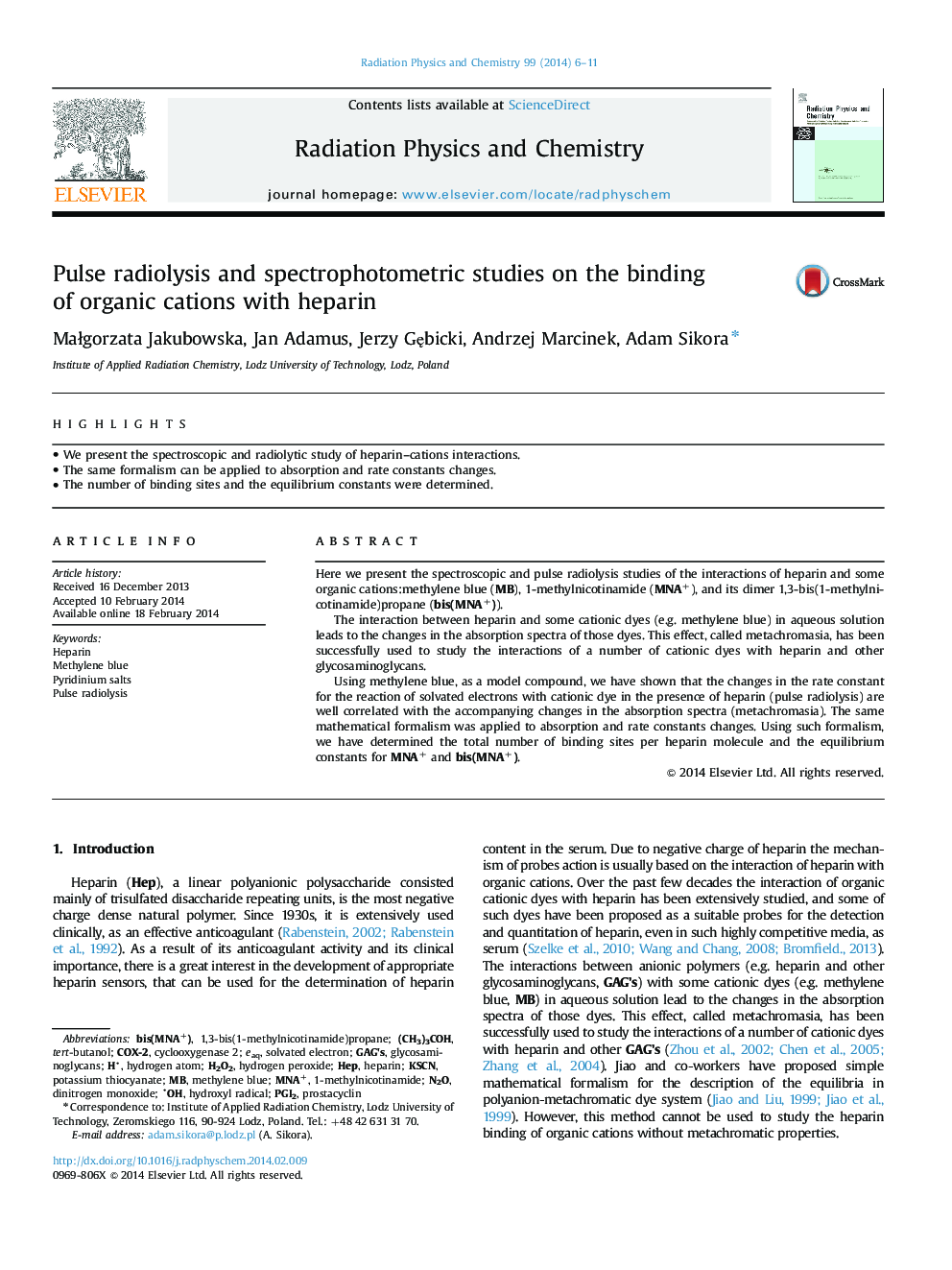| Article ID | Journal | Published Year | Pages | File Type |
|---|---|---|---|---|
| 1883516 | Radiation Physics and Chemistry | 2014 | 6 Pages |
•We present the spectroscopic and radiolytic study of heparin–cations interactions.•The same formalism can be applied to absorption and rate constants changes.•The number of binding sites and the equilibrium constants were determined.
Here we present the spectroscopic and pulse radiolysis studies of the interactions of heparin and some organic cations:methylene blue (MB), 1-methylnicotinamide (MNA+), and its dimer 1,3-bis(1-methylnicotinamide)propane (bis(MNA+)).The interaction between heparin and some cationic dyes (e.g. methylene blue) in aqueous solution leads to the changes in the absorption spectra of those dyes. This effect, called metachromasia, has been successfully used to study the interactions of a number of cationic dyes with heparin and other glycosaminoglycans.Using methylene blue, as a model compound, we have shown that the changes in the rate constant for the reaction of solvated electrons with cationic dye in the presence of heparin (pulse radiolysis) are well correlated with the accompanying changes in the absorption spectra (metachromasia). The same mathematical formalism was applied to absorption and rate constants changes. Using such formalism, we have determined the total number of binding sites per heparin molecule and the equilibrium constants for MNA+ and bis(MNA+).
